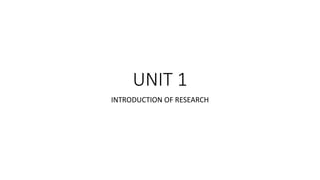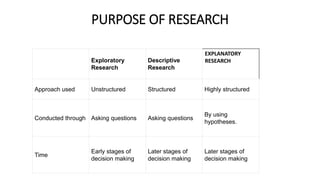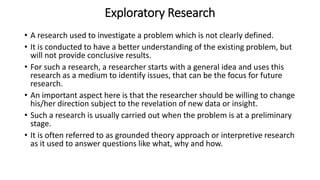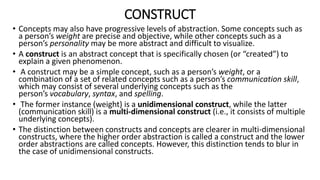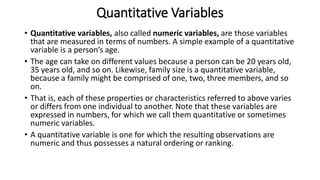The document provides an introduction to key concepts in research methods. It defines research as a systematic process of investigation to establish facts and reach new conclusions. The main purposes of research are to learn and gather evidence. There are three main types of research: exploratory research which is unstructured, descriptive research which is structured, and explanatory research which uses hypotheses. Good research has clear definitions, acknowledges limitations, is planned, uses sufficient data, allows for generalization, and is systematic and logical. The scope of research includes areas like the environment, technology, innovation, competitors, markets, products, pricing, promotion, sales, customers, and organizations. Research can be pure/basic research aimed at knowledge, applied research aimed at solving problems, or
